
Pots are a great way to display plants, both indoors and outdoors. But what are the best plants for pots?
Choosing the right plant for a pot depends on your space, lighting, and care preferences. Here’s a guide to help you decide.
Are you looking to brighten up your living room or decorate your patio with plants? Keep reading to learn more about the best potted plants for different settings.
What are the best indoor plants for pots?
Indoor plants bring life and color to any room. But choosing the right one for pots can be tricky. Some plants thrive in smaller spaces, while others need more room to grow.
Indoor plants need to tolerate low light, dry air, and limited space, making them ideal for pots.
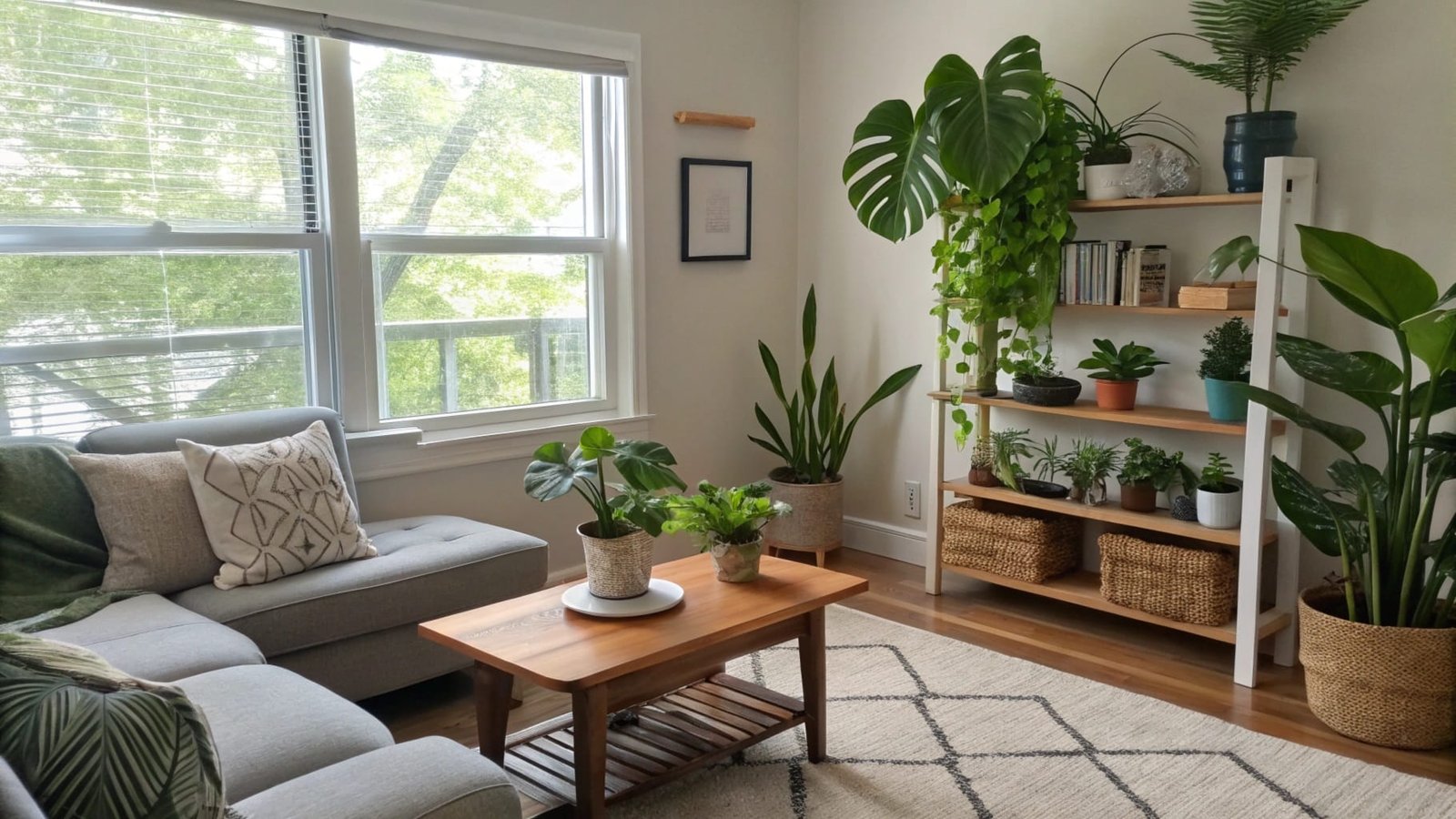
Popular Indoor Plants for Pots
Here’s a list of indoor plants that thrive in pots:
- Spider Plant (Chlorophytum comosum): Easy to care for and great for hanging baskets.
- Peace Lily (Spathiphyllum): Known for its air-purifying properties and beautiful white flowers.
- Snake Plant (Sansevieria): Low-maintenance and perfect for beginners.
- Aloe Vera: Not only decorative, but its gel also has healing properties.
- Pothos (Epipremnum aureum): A hardy vine that can grow in low light.
- ZZ Plant (Zamioculcas zamiifolia): A nearly indestructible plant that thrives with little attention.
- English Ivy: A classic choice for pots, especially for trailing arrangements.
These plants not only look beautiful but are also functional. Many indoor plants purify the air, making them perfect for home or office spaces.
Factors to Consider When Choosing Indoor Plants
- Light Requirements: Choose plants based on the light available in your home. Some plants, like snake plants, tolerate low light, while others need direct sunlight. If you have a lot of natural light, consider plants like succulents or cacti.
- Space: Make sure the plant fits in the pot and doesn't outgrow it too quickly. Some plants, like pothos, grow rapidly and might need repotting within a few months, while others like ZZ plants can stay in the same pot for years.
- Maintenance: Consider how much care you can give the plant. Some need regular watering, while others thrive on neglect. Peace lilies need a bit more attention with regular watering, while cacti and succulents prefer a hands-off approach.
- Air Quality: Many indoor plants help purify the air. If you’re concerned about air quality, look for plants like peace lilies, snake plants, or bamboo palms.
Indoor Plant Care Tips
- Watering: Overwatering is a common problem. Most indoor plants prefer to dry out between waterings. However, plants like peace lilies enjoy moist soil, so it's important to understand each plant’s specific watering needs.
- Humidity: Indoor air can be dry, especially in winter. Consider using a humidity tray or misting your plants occasionally. Plants like ferns, peace lilies, and orchids enjoy higher humidity levels.
- Potting: Use pots with drainage holes to prevent water from stagnating, which can lead to root rot. Make sure the pot is large enough for the roots, but not too large, as that can cause overwatering problems.
- Cleaning: Dust can accumulate on the leaves of your plants, blocking sunlight. Clean the leaves regularly with a soft cloth to keep them healthy.
Which outdoor plants thrive in pots?
Potted plants aren’t just for indoors. Many outdoor plants also thrive in containers, especially if you have limited space or want to move them around.
Outdoor plants in pots allow you to create a versatile, movable garden.
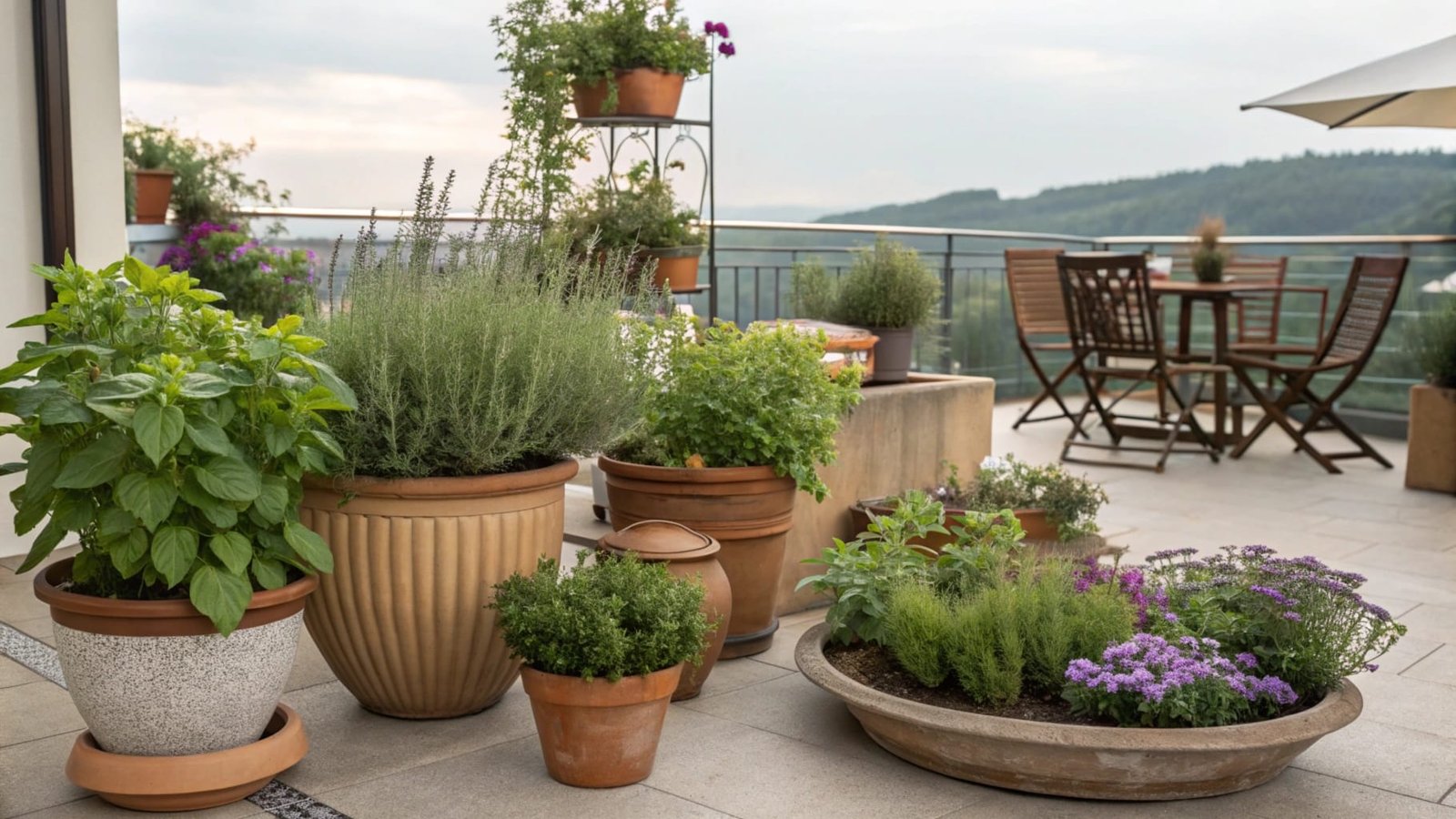
Best Outdoor Plants for Pots
Here are some outdoor plants that do well in pots:
- Geraniums: These colorful flowers do well in sunny spots and are perfect for containers. Geraniums can be grown in hanging baskets, window boxes, or pots on patios.
- Lavender: Known for its fragrance, lavender can thrive in pots and adds beauty to any garden. Lavender is also drought-tolerant, making it a low-maintenance choice.
- Tomatoes: Perfect for urban gardeners, tomatoes grow well in containers and can be placed on patios or balconies. You can choose from small cherry tomatoes or larger beefsteak varieties.
- Ferns: Ideal for shaded areas, ferns thrive in pots with well-draining soil. Ferns like Boston ferns or maidenhair ferns are well-suited for shaded patios or balconies.
- Herbs (Basil, Mint, Thyme): These plants do well in small pots and are great for kitchens or patios. Fresh herbs are perfect for cooking and can be placed near windows for easy access.
- Citrus Trees: Lemon and lime trees can thrive in large pots, bringing both beauty and fresh fruit to your garden. They require plenty of sunlight and warmth, making them perfect for sunny patios.
- Dahlias: These vibrant flowering plants love containers and do well in full sun. Dahlias come in a variety of colors, adding a cheerful touch to your outdoor space.
Benefits of Outdoor Plants in Pots
- Portability: You can move potted plants around to catch the sun or protect them from bad weather. This is particularly useful for delicate plants that need to be shielded from frost or excessive heat.
- Space-Saving: Perfect for small gardens, balconies, or patios where ground space is limited. Container gardening allows you to maximize vertical space and create a lush environment in small areas.
- Decorative: Pots can add color and texture to outdoor spaces, creating focal points in gardens or balconies. You can mix and match different plant types in containers for a unique aesthetic.
- Adaptability: Container gardening allows you to grow plants in a variety of environments, even if your soil isn’t ideal. Pots give you control over the growing medium, allowing you to customize it to the plant’s needs.
Care Tips for Outdoor Potted Plants
- Sunlight: Make sure your outdoor plants get enough light. Most outdoor plants prefer full sun, but some, like ferns, do better in the shade. Choose plants based on your garden’s light conditions.
- Watering: Outdoor plants in pots tend to dry out faster than those in the ground. Water them regularly, especially during hot weather. Consider setting up a drip irrigation system for consistent watering.
- Fertilizing: Many outdoor plants benefit from regular feeding to promote healthy growth. Use a slow-release fertilizer for best results, or feed with a liquid fertilizer every few weeks.
- Protection from Pests: Outdoor plants are more susceptible to pests. Keep an eye on your plants for signs of insects, and treat them promptly with natural remedies or insecticidal soap.
Are succulents good choices for potted plants?
Succulents are a popular choice for pots because they are easy to care for and come in many shapes and colors. But are they the best option for you?
Succulents require minimal care but need a specific environment to thrive in pots.
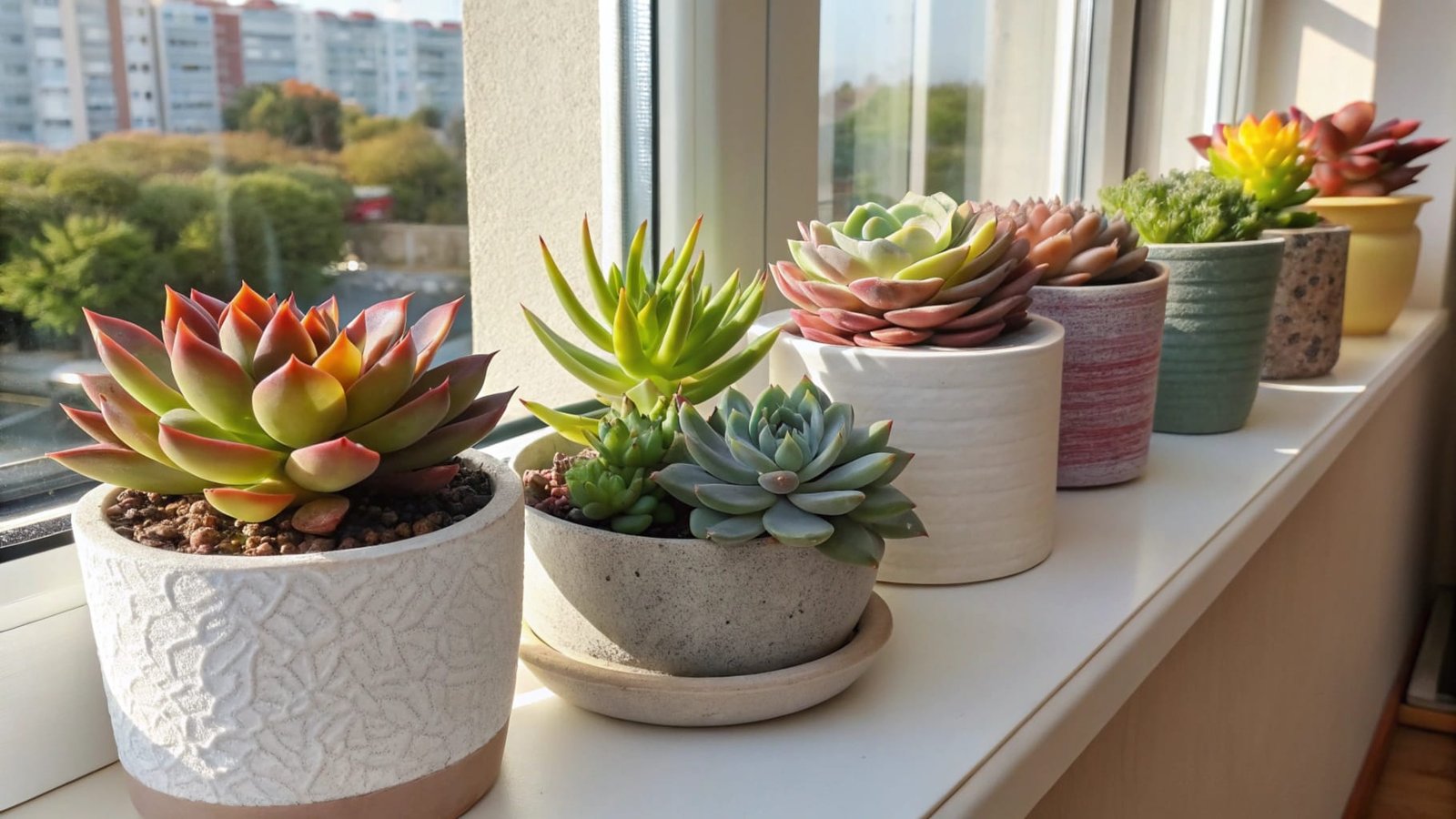
Popular Succulents for Pots
Here are some succulents that are perfect for potted arrangements:
- Aloe Vera: This plant is not only beautiful but also has medicinal uses. Aloe vera’s gel can be used to treat burns and skin irritations.
- Echeveria: A rosette-shaped succulent that looks stunning in pots. Echeveria is available in various colors, from green to purple and even pink.
- Jade Plant (Crassula ovata): A low-maintenance plant with thick, fleshy leaves. This plant can live for years and grow into a small tree.
- Sedum: Known for its ability to thrive in dry conditions, sedum is great for pots. There are many varieties, some with vibrant foliage and flowers.
- Cactus: Though prickly, cactus plants can be quite attractive in a pot. Cacti thrive in hot, dry conditions, making them ideal for low-maintenance gardeners.
- String of Pearls: A unique and attractive trailing succulent, ideal for hanging pots or shelves. It’s known for its small, bead-like leaves that cascade beautifully.
Key Considerations for Growing Succulents in Pots
- Soil Type: Succulents need well-draining soil. A cactus or succulent potting mix is ideal. You can also mix sand with regular potting soil to improve drainage.
- Watering Needs: Overwatering is a common mistake. Allow the soil to dry out before watering again. Succulents store water in their leaves, so they don’t need frequent watering.
- Light: Succulents need plenty of sunlight. Place them in a sunny spot for optimal growth. A south-facing window or a sunny patio is perfect.
- Temperature: Succulents thrive in warm temperatures, so avoid placing them in areas with drafts or extreme cold. They do best in temperatures between 60°F and 85°F (15°C - 29°C).
Care Tips for Succulent Pots
- Pot Selection: Use pots with drainage holes to prevent water accumulation at the bottom, which can lead to root rot.
- Watering Schedule: Water your succulents sparingly, and let the soil dry out completely between waterings.
- Repotting: As your succulents grow, repot them into a slightly larger container to give them more space for root expansion. Succulents generally don’t need to be repotted frequently.
What types of flowering plants are suitable for pots?
If you love flowers, there are plenty of options for potted flowering plants. From bright blooms to fragrant blossoms, flowers add color and charm to any space.
Flowering plants in pots can be moved around and provide beauty throughout the seasons.
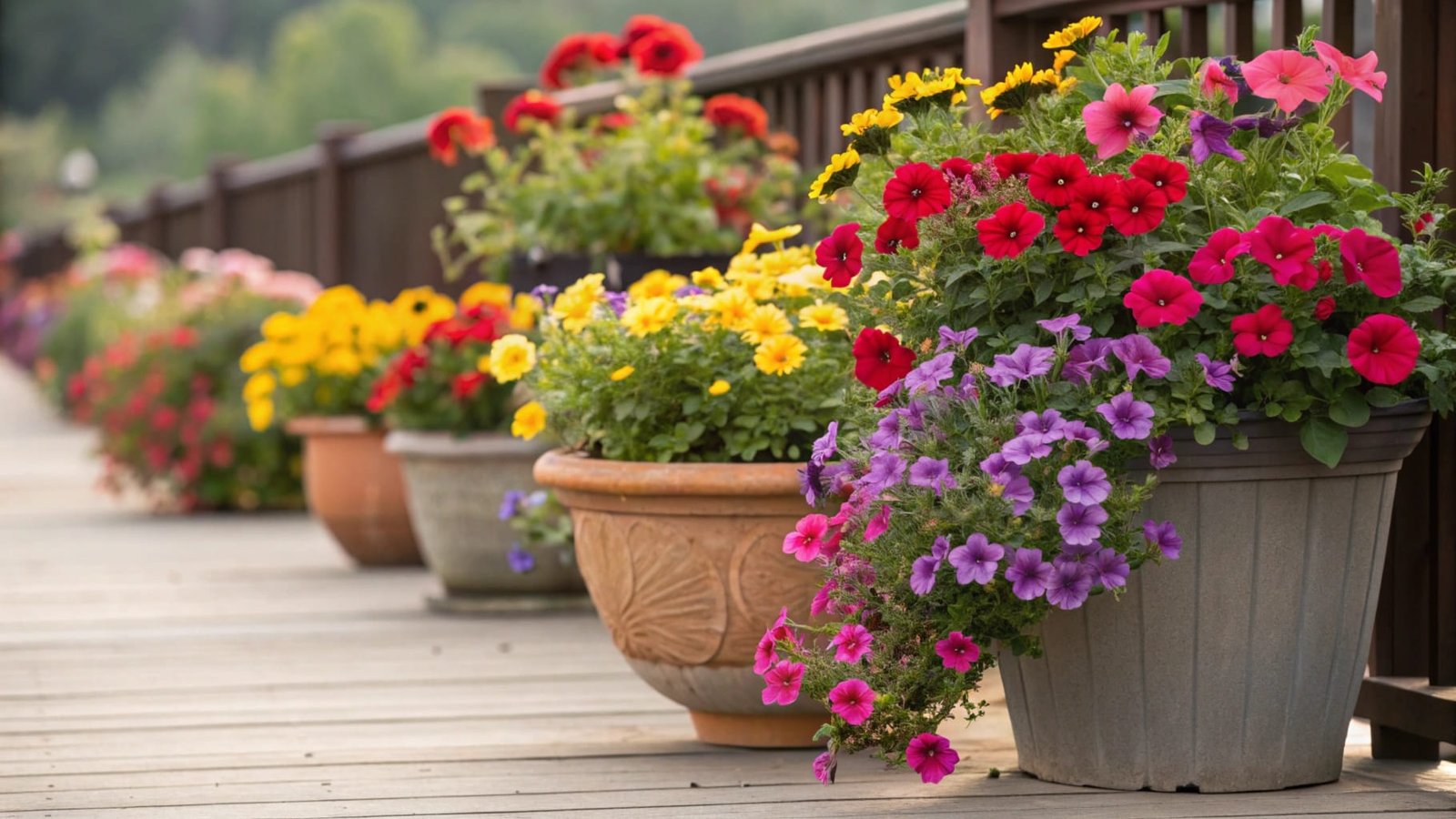
Best Flowering Plants for Pots
Here are some flowering plants that thrive in pots:
- Petunias: Easy to grow and available in many colors, petunias are perfect for hanging baskets or pots. Petunias thrive in full sun and bloom continuously throughout the growing season.
- Begonias: These plants provide long-lasting blooms and are ideal for shady areas. Begonias come in various colors and can be used for both hanging baskets and container arrangements.
- Impatiens: A great choice for low-light spots, impatiens have bright, colorful flowers. They are perfect for shaded patios or balconies.
- Fuchsia: Known for its trailing vines and bright flowers, fuchsia is perfect for hanging baskets or pots. Fuchsia flowers are attractive to hummingbirds.
- Geraniums: Hardy and colorful, geraniums do well in pots and can flower all season. They are available in a wide range of colors, including red, pink, and white.
- Snapdragons: These tall flowers are perfect for pots and add vertical interest to your garden. Snapdragons bloom in a variety of vibrant colors, including yellow, red, and purple.
Tips for Growing Flowering Plants in Pots
- Pot Size: Choose a pot large enough to allow room for the roots to grow. A pot that is too small can stunt the plant’s growth.
- Soil: Use a potting mix designed for flowering plants to encourage blooms. Look for a mix with good drainage properties.
- Fertilizing: Flowering plants may need extra nutrients, so consider adding a slow-release fertilizer. You can also use liquid fertilizer every two weeks during the growing season.
- Deadheading: Remove spent flowers regularly to encourage new blooms. Deadheading helps the plant focus its energy on producing more flowers.
Flower Care Tips
- Watering: Flowering plants need regular watering, especially when they are actively blooming. However, be sure to allow the soil to drain properly to avoid root rot.
- Sunlight: Most flowering plants require full sun to bloom. Place them in a location that gets at least 6 hours of direct sunlight per day.
- Pest Control: Keep an eye out for pests, especially on flowering plants. Aphids and spider mites can be common problems.
How do I choose the right size pot for my plant?
Choosing the right pot size is crucial for your plant’s growth and health. If the pot is too small, the plant may become root-bound. If it's too large, the plant may struggle to thrive.
The right-sized pot allows your plant to grow and stay healthy while preventing root rot.
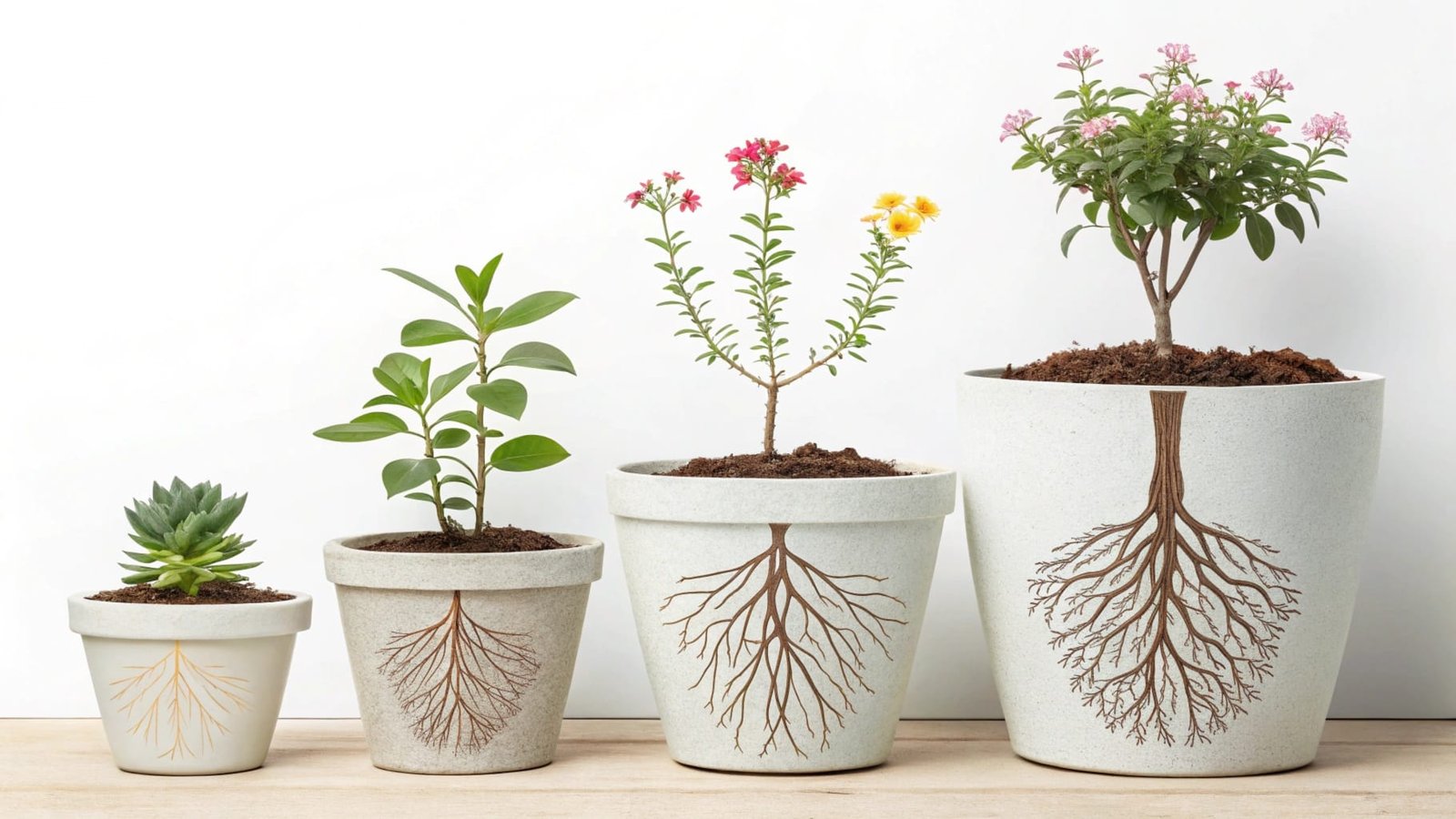
Guidelines for Choosing the Right Pot Size
- Small Plants: For small plants or seedlings, choose a pot that is 1-2 inches larger than the plant’s root ball.
- Medium Plants: For medium-sized plants, pick a pot that is 2-3 inches wider than the root ball.
- Large Plants: Large plants need pots that are 3-4 inches wider and deeper than the root system.
Other Factors to Consider
- Drainage: Always ensure your pot has drainage holes to prevent water from collecting at the bottom.
- Material: Pots come in different materials like clay, plastic, and ceramic. Choose one that fits your plant’s needs and aesthetic.
- Weight: Large pots can get heavy when filled with soil, so consider the weight when deciding where to place them.
- Root Growth: Plants need room for their roots to spread. Too small a pot can restrict growth and cause stress to the plant.
Common Potting Mistakes to Avoid
- Using Too Large a Pot: A pot that’s too big can cause the soil to stay too wet, leading to root rot. Plants often struggle to thrive in an overly large pot because they can’t take up the excess moisture.
- Not Checking for Drainage: Without proper drainage, water will pool at the bottom of the pot, suffocating the roots.
- Not Repotting in Time: If your plant outgrows its pot, it may become root-bound. Repotting is essential to keep your plant healthy.
Conclusion
Choosing the right plant for a pot depends on several factors, including your space, lighting, and care preferences. The right pot and plant combination can transform your home or garden into a beautiful, thriving space.


